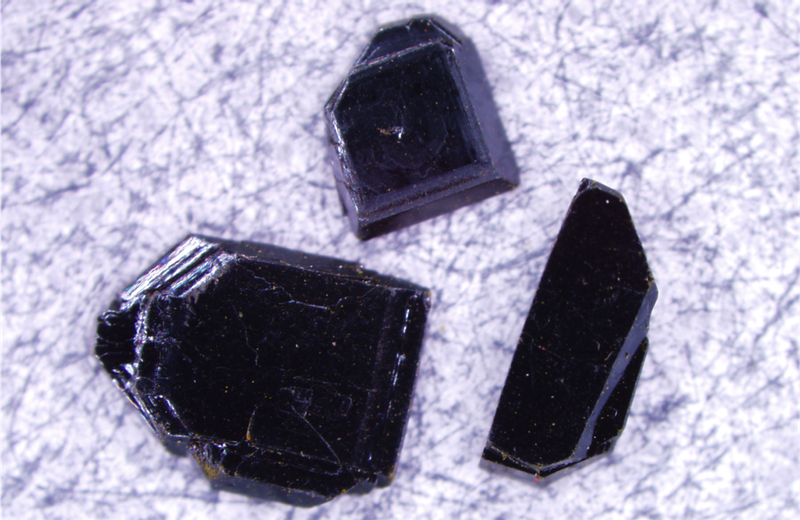Ultrafast Switch with Organic Crystal
Digital telecommunications networks need materials that can rapidly switch between a “zero” and a “one” state. Now researchers have demonstrated a fast and temporary change of state in an organic crystal using a picosecond ( 10−12 seconds) electric-field pulse. The switching worked at temperatures between 90 and 260 K, within 40 degrees of room temperature, laying the groundwork for future more practical materials.
Materials scientists consider certain ferroelectric materials good candidates for fast switches because they can potentially toggle quickly between two physical states in response to light or an electric field. In these materials, the molecules are neutral at room temperature (the paraelectric state), but upon cooling below the critical temperature ( Tc), the electric charges redistribute and produce a permanent electric field. This “polarization” is the hallmark of the so-called ferroelectric state that exists at low temperature.
In previous work, a University of Tokyo team led by Hiroshi Okamoto cooled the organic crystal TTF-CA below Tc (81 K) and then used an electric-field pulse to change the magnitude of polarization in the ferroelectric state in less than a picosecond. This rapid change was about a thousand times faster than current commercial switches, but the procedure did not reverse the polarization or switch between ferroelectric and paraelectric states.
Now Okamoto’s team has demonstrated that they can start with TTF-CA in its neutral state above Tc and briefly produce polarization akin to the ferroelectric state. The success depended critically on the team’s specialized, high-speed setup, which they used previously. It involves zapping the crystal with a picosecond-long electric-field pulse and then hitting it with an even shorter laser pulse with some delay measured in femtoseconds ( 10−15 seconds) to measure the degree of polarization.
At 90 K the team found that in less than 1 picosecond, the crystal became about one-fifth as polarized as a crystal cooled below Tc. The polarization only lasted for about a picosecond, which is appropriate for use in communications, where switches need to reset quickly, says Okamoto. The researchers induced polarization in the crystal at temperatures up to 260 K, although the magnitude of polarization decreased as temperature increased.
Growing TTF-CA crystals is difficult in bulk, so Okamoto doesn’t think commercial optical switches will use this material. But a better understanding of TTF-CA gained from experiments could lead to the development of similar organic materials that are cheap to produce. Okamoto says that these cheap materials might replace the current commercial switches made of inorganic semiconductors such as gallium arsenide, which can be expensive to process. These switches might follow the same historical path as lenses, says physical chemist Simone Techert of the University of Göttingen in Germany. “In the old days, all lenses were made of quartz or glass,” which are inorganic, but many lenses today are plastic (and thus organic), she says.
This research is published in Physical Review Letters.
–Sophia Chen
Sophia Chen is a freelance science writer based in Columbus, Ohio.





